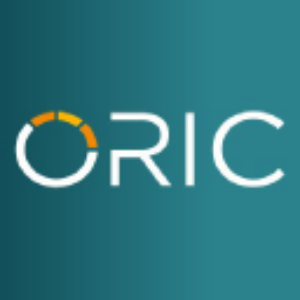ORIC Pharmaceuticals Announces First Patients Dosed Across Three Expansion Cohorts in Phase 1b Trial of ORIC-114 in Patients with Mutated NSCLC
Initiated multiple Phase 1b expansion cohorts to determine the RP2D of ORIC-114 in NSCLC patients with EGFR exon 20, HER2 exon 20, or EGFR atypical mutations
Additionally, the company initiated an extension cohort to evaluate ORIC-114 for the treatment of patients with first-line, treatment-naïve EGFR exon 20 NSCLC
Expect to report updated Phase 1b data in the first half of 2025
SOUTH SAN FRANCISCO, Calif. and SAN DIEGO, April 15, 2024 (GLOBE NEWSWIRE) -- ORIC Pharmaceuticals, Inc. (Nasdaq: ORIC), a clinical stage oncology company focused on developing treatments that address mechanisms of therapeutic resistance, today announced the completion of the dose escalation portion of the Phase 1b trial of ORIC-114 in patients with advanced solid tumors with EGFR and HER2 exon 20 alterations or HER2 amplifications. Based upon these data, ORIC selected the two provisional recommended Phase 2 dose (RP2D) levels of ORIC-114 at 80 mg and 120 mg QD, which are being further evaluated in three dose expansion cohorts for dose optimization and final RP2D selection. These expansion cohorts have now been initiated in patients with non-small cell lung cancer (NSCLC) with EGFR exon 20 (EGFR exon 20 inhibitor naïve), HER2 exon 20, or EGFR atypical mutations. The company also announced the initiation of an extension cohort for the treatment of patients with first-line, treatment-naïve EGFR exon 20 NSCLC.
“Following the positive dose escalation data reported at ESMO 2023, we are excited to announce the advancement of ORIC-114 into Phase 1b dose expansion,” said Pratik Multani, M.D., chief medical officer of ORIC. “Encouraging findings from the Phase 1b dose escalation phase of the trial demonstrated a potential best-in-class profile for ORIC-114, with notable systemic responses and CNS responses, as well as a favorable safety profile, in heavily pre-treated patients. Based on these results, we have identified the two dose levels that we are now advancing into Phase 1b expansion cohorts to determine the final RP2D for further development, including potential registrational cohorts. At the request of many of our investigators and because of the lack of other CNS-active agents against EGFR exon 20, we are also extending our trial to include a cohort evaluating first-line, treatment-naïve NSCLC. We are hopeful that the expansion portion of the trial will validate and build upon the encouraging efficacy seen in the dose escalation, and plan to report results in the first half of 2025.”
The Phase 1b dose escalation part of the trial evaluated ORIC-114 in patients with advanced solid tumors with EGFR and HER2 exon 20 alterations or HER2 amplifications. Patients previously treated with an exon 20 targeted agent were eligible, including patients with CNS metastases that were either treated or untreated but asymptomatic. Nearly all other clinical trials with EGFR exon 20 inhibitors severely restricted the eligible patient population and excluded patients with active or untreated brain metastases and patients previously treated with an EGFR exon 20 inhibitor. The primary objectives were to determine the provisional RP2D, and additional objectives included characterization of the safety, tolerability, pharmacokinetic, and preliminary antitumor activity.
The Phase 1b expansion portion of the trial will evaluate the safety and efficacy of ORIC-114 at the provisional RP2D levels of 80 mg and 120 mg QD in patients with mutated NSCLC, including EGFR exon 20 (EGFR exon 20 inhibitor naïve), HER2 exon 20, and EGFR atypical mutations. The primary objectives are to determine the RP2D, and additional objectives include assessment of efficacy in terms of objective response rate, duration of response and progression-free survival, including intracranial activity, as well as further characterization of the safety profile of ORIC-114.
About ORIC-114
ORIC-114 is a highly selective, brain penetrant, orally bioavailable, irreversible inhibitor designed to selectively target EGFR and HER2 with high potency against exon 20 insertion mutations, making it a promising therapeutic candidate to address the unmet medical need of having both meaningful systemic as well as CNS antitumor activity.
About ORIC Pharmaceuticals, Inc.
ORIC Pharmaceuticals is a clinical stage biopharmaceutical company dedicated to improving patients’ lives by Overcoming Resistance In Cancer. ORIC’s clinical stage product candidates include (1) ORIC-114, a brain penetrant inhibitor designed to selectively target EGFR and HER2 with high potency against exon 20 insertion mutations, being developed across multiple genetically defined cancers, (2) ORIC-944, an allosteric inhibitor of the polycomb repressive complex 2 (PRC2) via the EED subunit, being developed for prostate cancer, and (3) ORIC-533, an orally bioavailable small molecule inhibitor of CD73, a key node in the adenosine pathway believed to play a central role in resistance to chemotherapy- and immunotherapy-based treatment regimens, being developed for multiple myeloma. Beyond these three product candidates, ORIC is also developing multiple precision medicines targeting other hallmark cancer resistance mechanisms. ORIC has offices in South San Francisco and San Diego, California. For more information, please go to www.oricpharma.com, and follow us on X or LinkedIn.
Cautionary Note Regarding Forward-Looking Statements
This press release contains forward-looking statements as that term is defined in Section 27A of the Securities Act of 1933 and Section 21E of the Securities Exchange Act of 1934. Statements in this press release that are not purely historical are forward-looking statements. Such forward-looking statements include, among other things, statements regarding the continued clinical development of ORIC-114, including the various Phase 1b expansion cohorts; ORIC-114 clinical outcomes, which may materially change as patient enrollment continues or more patient data become available; the development plans and timelines for ORIC-114 and ORIC’s other product candidates; the potential advantages of ORIC-114 and ORIC’s other product candidates and programs; plans underlying ORIC’s clinical trials and development; expected timing of ORIC-114 data updates; and statements by the company’s chief medical officer. Words such as “believes,” “anticipates,” “plans,” “expects,” “intends,” “will,” “goal,” “potential” and similar expressions are intended to identify forward-looking statements. The forward-looking statements contained herein are based upon ORIC’s current expectations and involve assumptions that may never materialize or may prove to be incorrect. Actual results could differ materially from those projected in any forward-looking statements due to numerous risks and uncertainties, including but not limited to: risks associated with the process of discovering, developing and commercializing drugs that are safe and effective for use as human therapeutics and operating as an early clinical stage company; ORIC’s ability to develop, initiate or complete preclinical studies and clinical trials for, obtain approvals for and commercialize any of its product candidates; changes in ORIC’s plans to develop and commercialize its product candidates; the potential for clinical trials of ORIC’s product candidates to differ from preclinical, initial, interim, preliminary or expected results; negative impacts of health emergencies, economic instability or international conflicts on ORIC’s operations, including clinical trials; the risk of the occurrence of any event, change or other circumstance that could give rise to the termination of ORIC’s license and collaboration agreements; the potential market for ORIC’s product candidates, and the progress and success of competing therapeutics currently available or in development; ORIC’s ability to raise any additional funding it will need to continue to pursue its business and product development plans; regulatory developments in the United States and foreign countries; ORIC’s reliance on third parties, including contract manufacturers and contract research organizations; ORIC’s ability to obtain and maintain intellectual property protection for its product candidates; the loss of key scientific or management personnel; competition in the industry in which ORIC operates; general economic and market conditions; and other risks. Information regarding the foregoing and additional risks may be found in the section titled “Risk Factors” in ORIC’s Annual Report on Form 10-K filed with the Securities and Exchange Commission (the “SEC”) on March 11, 2024, and ORIC’s future reports to be filed with the SEC. These forward-looking statements are made as of the date of this press release, and ORIC assumes no obligation to update the forward-looking statements, or to update the reasons why actual results could differ from those projected in the forward-looking statements, except as required by law.
Contact:
Dominic Piscitelli, Chief Financial Officer
dominic.piscitelli@oricpharma.com
info@oricpharma.com








